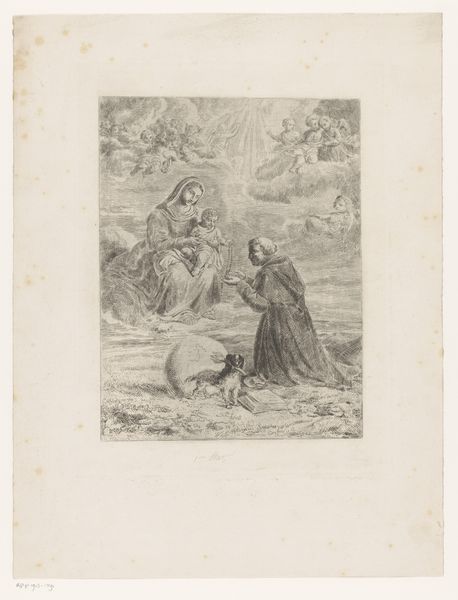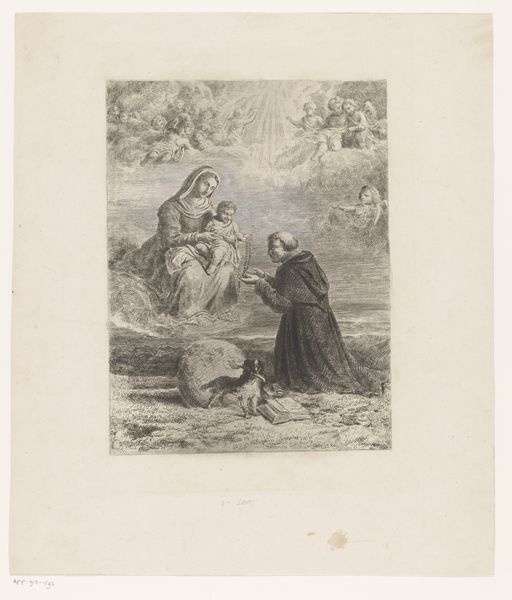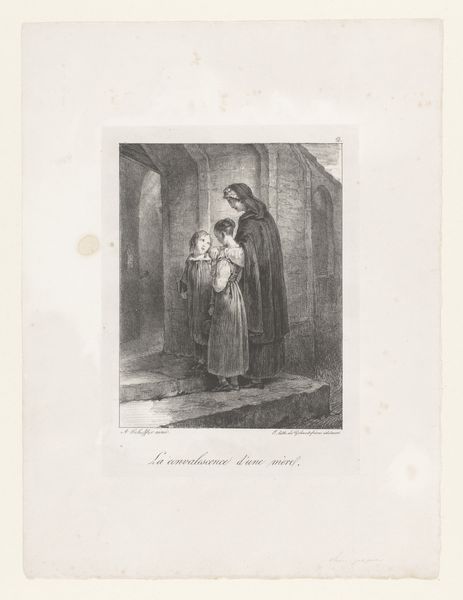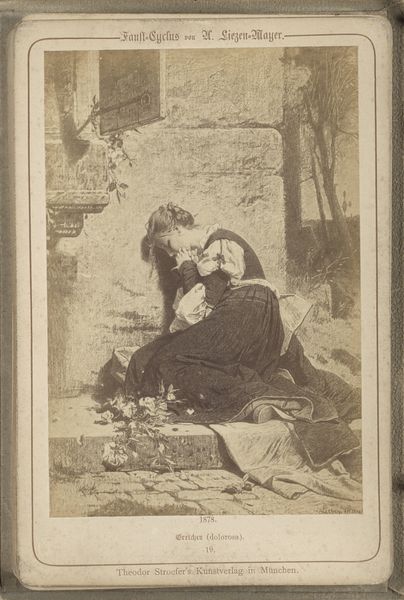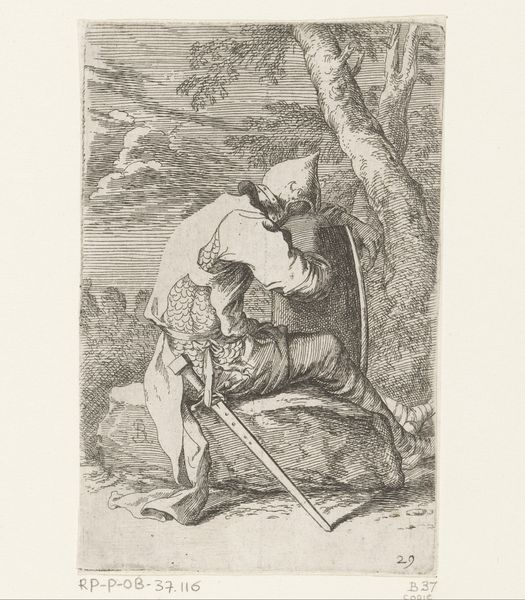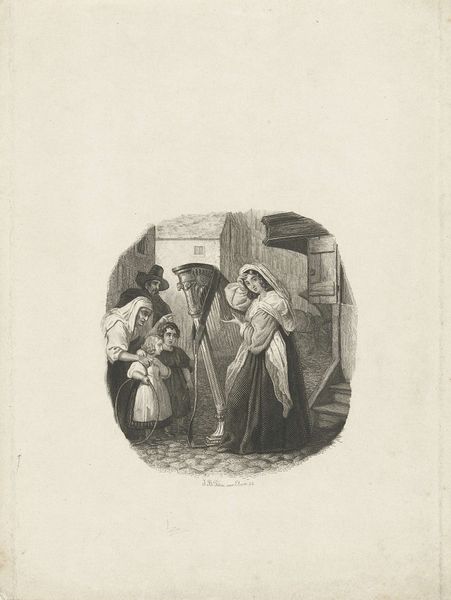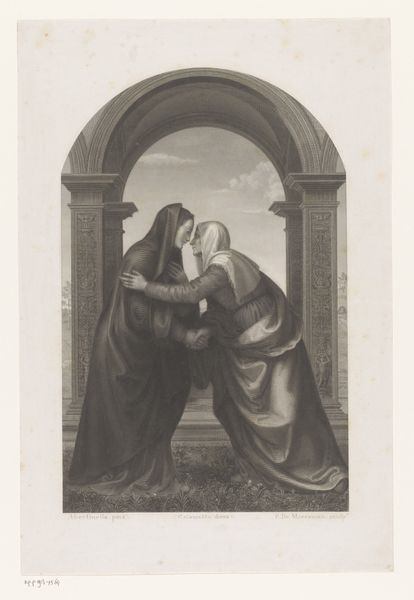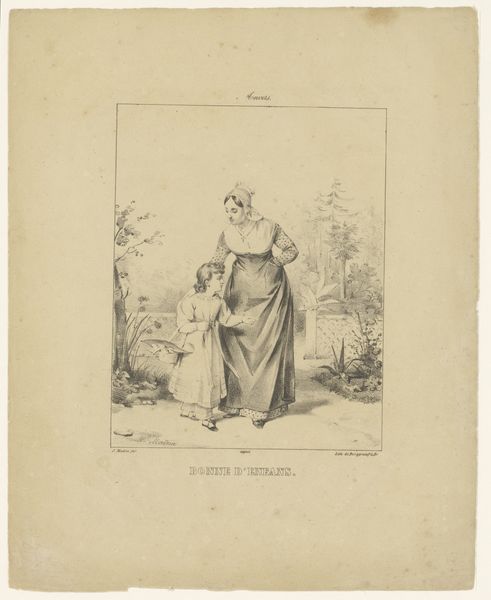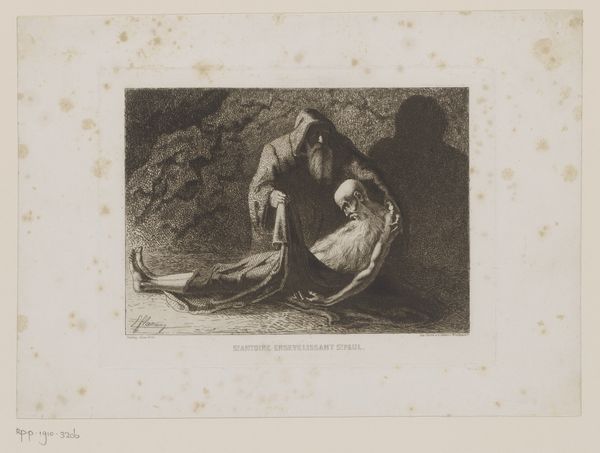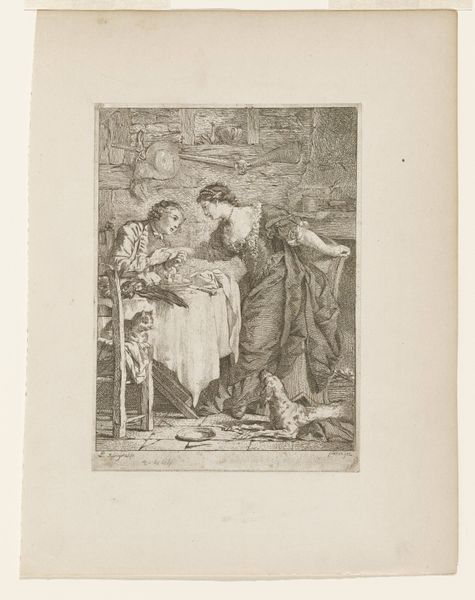
drawing, print, engraving
#
portrait
#
drawing
#
medieval
# print
#
figuration
#
line
#
history-painting
#
engraving
#
realism
Dimensions: 402 mm (height) x 235 mm (width) (Plademål)
Editor: This is "St. Antonius og en bedende mand" by Erling Eckersberg, created in 1833. It's an engraving, a print. It feels very… stark, almost like a snapshot of a historical scene. What catches your eye when you look at it? Curator: The starkness, as you call it, draws me immediately to the *process* of its making. Engraving, unlike painting, is an inherently reproducible medium. So, we must ask: Who was this image for? Who had access to it, and what was its purpose? Consider also the economic aspects, the availability and cost of materials - paper, ink, the metal plate, and the labour required. Editor: That’s interesting. I was just focused on the figures and the composition! Curator: Exactly. The *figuration* – the representation of Saint Anthony and the praying man – cannot be divorced from the means of its production. How does the choice of engraving, versus another medium, affect the dissemination and interpretation of this historical narrative? What does this choice reveal about the social and economic status of both the artist and the intended audience? Editor: So, by thinking about the engraving process, we’re actually understanding the historical context better? Curator: Precisely. The medium *is* the message, in this case. And also, consider the very *act* of kneeling, the supplicant position... Is this meant to convey piety or perhaps subservience within a certain socio-political framework? What is the *relationship* to the work done to make it, and its consumption? Editor: I hadn't considered all those layers. Looking at it now, it's more than just a scene, it's a product of its time, shaped by materials, labour and intended for specific eyes. Curator: Yes, and questioning what drove its creation enriches our appreciation for Eckersberg's work immensely.
Comments
No comments
Be the first to comment and join the conversation on the ultimate creative platform.

